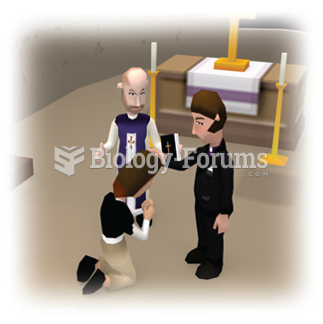Answer to Question 1
B
Answer to Question 2
-The family is a system of interrelated components.
A family is not a whole entity, but rather a whole comprised of interconnected parts. When examining family stress and crisis, then, we consider how we live our daily lives, relating to and interacting with others in interdependent relationships.
Thus, if we experience psychological stress or distress in our own personal daily lives, we will most likely transfer this stress to our families. Similarly, if we experience psychological stress in our own individual development, we will most likely transfer this stress to our families as well. This helps explain why the entire family experiences the adolescent's development.
-Family members affect and are affected by each other.
-What happens to one family member eventually affects (or happens to) others within the family unit. Virginia Satir'shanging mobile illustrates the delicate balance among components that comprise a family. What disrupts one component of the mobile will disrupt and affect all of the other components. Whether the disruption is a normative (expected) life event, such as the birth of a baby, a marriage, or an adolescent leaving home to enter college, or non-normative, such as the unexpected death of a loved one or the loss of the family home because of a fire or a hurricane, such events impact every member of the family system.
-Each family must be viewed as a whole.
Because we affect and are affected by each member in our family, others outside of our family cannot fully understand the nature of a stressful event or a crisis without knowing more about our family of origin.
-Each family's goal is to maintain homeostasis, or balance.
As a family undergoes change, the disruption in balance can result in stress or crisis. In other words, whenever a family is thrown off balance as a result of normative or non-normative disruptions either from within the family or outside of the family, the system will do whatever it takes to bring it back to balance. Sometimes a family may erupt in arguments and disagreements, escalating family conflict. To restore equilibrium, families will often employ previously established interactions and behaviors. All too often, families find that attempts to restore equilibrium through conflict are ill suited to aid them through the change the family is experiencing.







